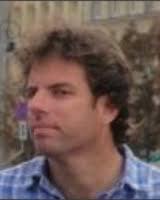Department Seminar - Prof. Ehud Yariv

Abstract
Superhydrophobic surfaces are formed by rough hydrophobic substrates which are immersed in water, the roughness being either natural or engineered — usually by texturing the substrate with periodic arrays of grooves, pillars or holes. When the roughness varies on a micrometer scale, the immersed substrate may attain a so-called Cassie state, wherein gas bubbles become trapped in the vacancies of the microstructure. Superhydrophobic surfaces are well known for their spectacular fluidic properties, exhibiting anomalous wetting phenomena and reduced hydrodynamic friction. The latter feature is commonly described via a canonical problem, where the surface is exposed to an otherwise uniform shear flow; in that idealized problem, the slipperiness of the surface is quantified by an effective slip length. A more realistic canonical problem involves pressure-driven flow.
I will discuss the application of asymptotic and conformal-mapping methods to several variants of these canonical problems. Time permitting, I will also discuss thermocapillary flows about superhydrophobic surfaces and introduce a new canonical problem which involves the rigid-body-like motion of superhydrophobic particles.
Speakers Short CV
Dr. Yariv graduated in 1992 from the Department of Aerospace Engineering of the Technion. In 2001 he received a PhD in Applied Mathematics. In 2001-2004 he was a post-doctoral fellow at the Department of Chemical Engineering of MIT, working with Howard Brenner. He joined the Technion faculty in 2004 and has been an associate professor in the Technion mathematics department since 2010. His research and teaching work are related to small-scale fluid mechanics and transport phenomena, and in particular to the use of singular perturbations to elucidate problems in these fields.
